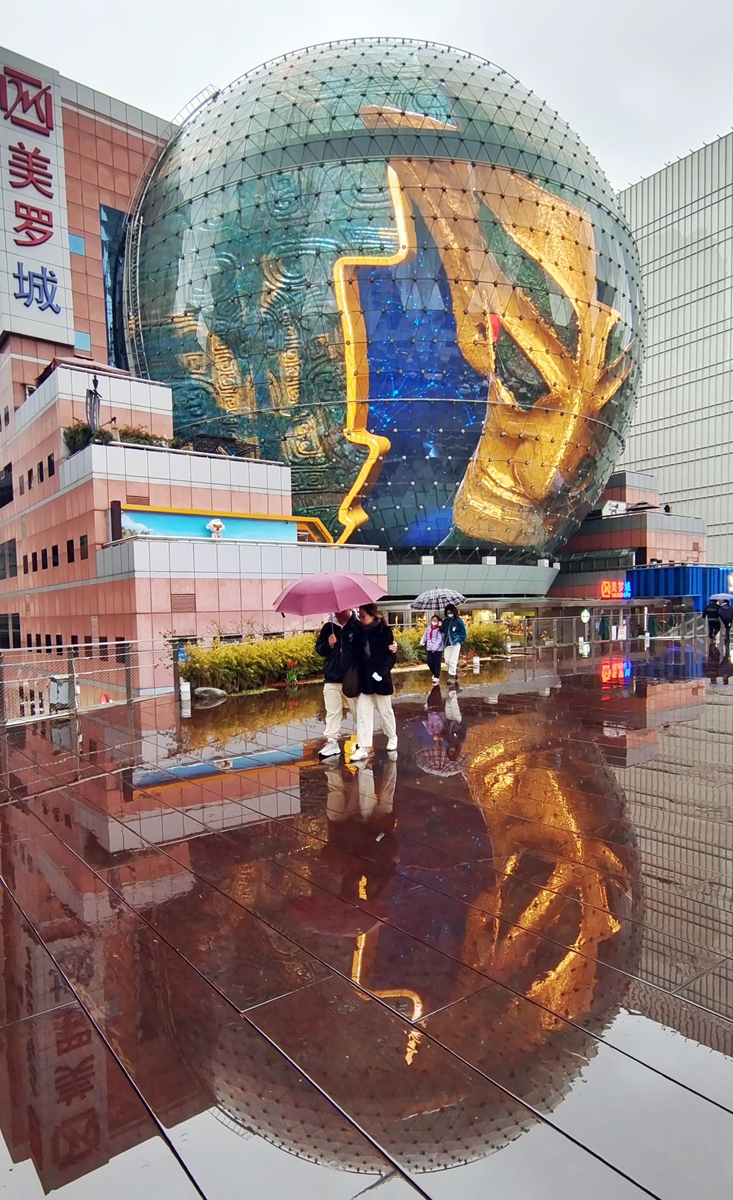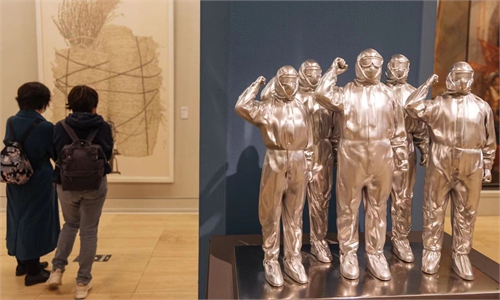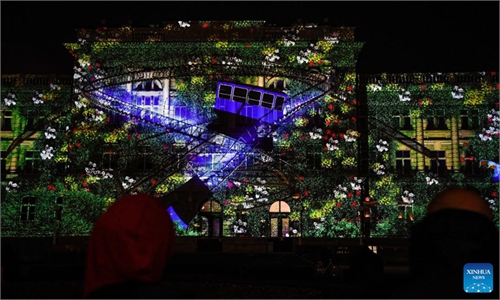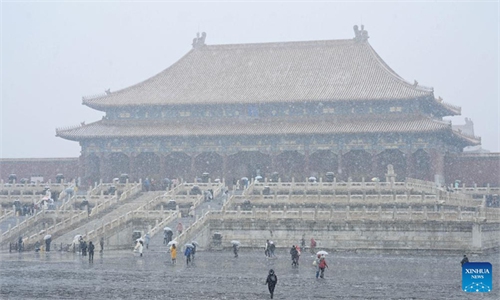ARTS / CULTURE & LEISURE
Metaverse can offer easy access to China’s rich cultural and natural heritage: scholars
Connecting past, present, future

A bronze mask from the Sanxingdui Ruins appears on a "crystal ball screen" at a shopping mall in Shanghai on March 7, 2022. Photo: IC
Upon entering the room, you are greeted by a 2.62-meter-tall standing bronze figure excavated from the Sanxingdui Ruins. To its left, a 1,000-year-old stone Buddha statue from the Yungang Grottoes sits smiling at you. After appreciating these masterpieces from ancient Chinese dynasties, you walk through a door and suddenly find yourself exploring the well-known mountains and rivers of China's Zhangjiajie National Forest Park.The crazy thing is, all these places can be seen without you even leaving your couch.
This is the scene imagined by many Chinese museum academies and cultural researchers, who are thinking of ways to use the virtual reality worlds collectively known as the metaverse to give people easy access to China's rich cultural and natural heritage.
On Saturday, 60 Chinese museum curators and scholars announced an initiative calling on museums around China to actively participate in the new wave of scientific and technological revolution and industrial transformation and give play to their own advantages to help contribute to the metaverse.
"We had planned to have a meeting in Shanghai but the new COVID-19 outbreak suspended that plan, so we decided to publish the initiative first," Zhao Feng, one of them and also curator of the China National Silk Museum, told the Global Times on Monday.
Bound together
The initiative points out the importance of museums when building the metaverse.
"In the process of virtual digitization of the real world, the metaverse needs a large number of material samples from the real world and cultural elements from the spiritual world, and the best place to get both material specimens and cultural elements is the museum," the initiative said.
The scholars noted that the future of museums is bound to the metaverse. While the metaverse needs the content in museums, museums should welcome the metaverse to help make their collections come alive in virtual reality.
Zhao pointed out how visitor numbers to museums have dropped since the pandemic, noting that in response they have been promoting and developing their online museum to adapt to the situation.
"Internet companies, domestic and abroad, including Facebook, Baidu and Tencent, have been developing the metaverse since 2021, causing the technology to become more and more mature. And there have been some examples of it being put into practice, so the concept is accelerating into our work and life," Ding Daoshi, a veteran independent analyst in the internet sector, explained.
He added that he feels that Chinese museums are just now beginning to scout out paths to the metaverse.
On International Museum Day in 2021, Ding found that the museum he was visiting was offering VR glasses for visitors so they could be immersed in a matching environment when appreciating the collections. "It was very impressive," Ding recalled.
First step
The official websites of many Chinese museums have established sections dedicated to virtual reality, making it so real that people can still personally experience the feeling of wandering a museum even if they are stuck at home.
The China National Silk Museum launched a digital museum in 2021 and plans to include an interactive map about international silk by the end of 2022, according to Zhao.
In Zhao's view, museums in the metaverse should share their resources with each other.
"Different museums can provide digital assets on a variety of items in their collections and preserve them in a virtual warehouse. Then exhibitions can be directly planned online," Zhao said, giving free rein to his imagination.
The Museum of the Sanxingdui Ruins told the Global Times on Monday that it supported the initiative, pointing out that some of the most famous cultural relics at the museum have appeared in the virtual world.
On the stage of CCTV's 2022 Spring Festival Gala, XR (mixed reality) was used to place two performers in front of a giant bronze mask discovered at the Sanxingdui Ruins. The bronze figure moved and danced with the performers, stunning Chinese audiences.
The Sanxingdui Ruins also appeared in a metaverse world developed by Baidu in December 2021, allowing metaverse visitors to experience the fan of exploring the mysterious civilization themselves.
"We need more innovative methods and have to break free from our shackles to develop the metaverse. Technology such as augmented reality (AR) should be used at museums as soon as possible," Ding said, adding that beyond museums, natural parks and cultural streets can all join in the metaverse.
Besides developing more lifelike and stable products and services, social interactivity should be a focus when moving museums into the metaverse to increase people's interest in visiting them in the virtual world, Ding suggested.




